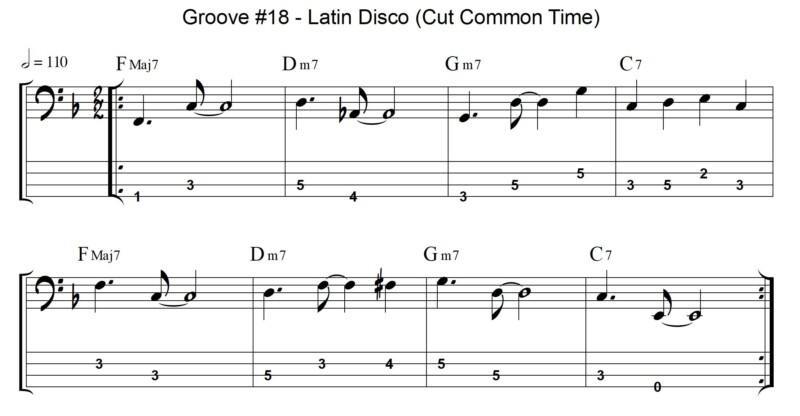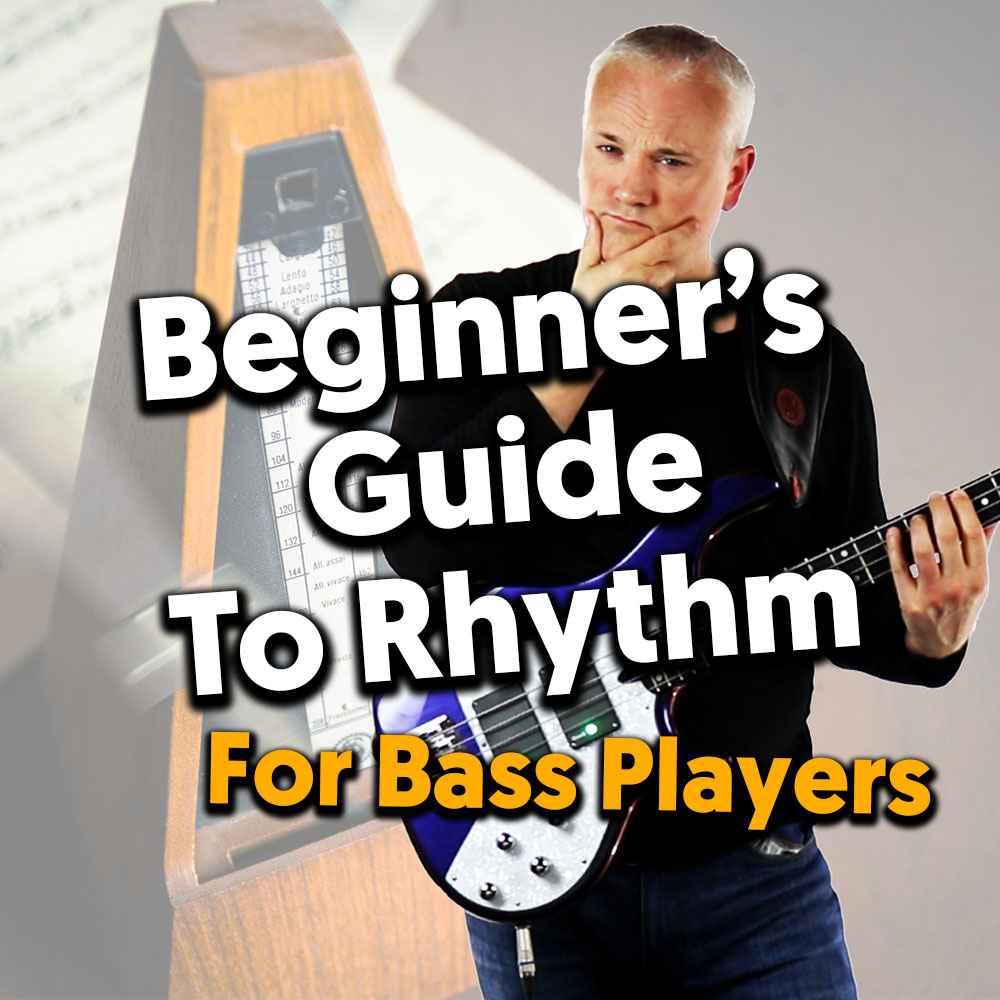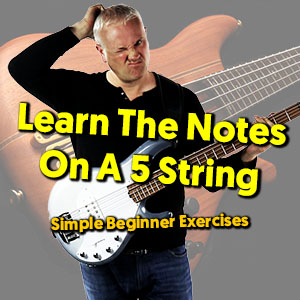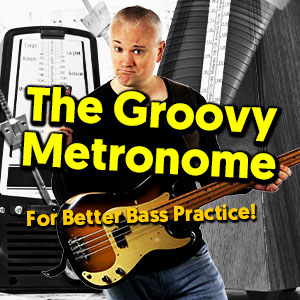Today I’m featuring two separate, but related lessons from the upcoming Groove Trainer Volume 2 course. We’re going to look at a time signature many beginner to intermediate players will find problematic, 2/2 also known as Cut Common time or Cut Time.
Cut common is more common than you might think and it’s important to understand the difference in counting and feel when moving into feels that use this meter like Samba, Salsa and most other Latin styles.
Groove Trainer Course Vol.2
This is the follow up to the popular Groove Trainer Vol.1 in which we work through a series of bass grooves specifically designed for the course. Where we focus on developing your technique, rhythm and general playing abilities step by step.
There are 13 in depth bass lessons on the relevant topics, before moving onto 60 grooves in a variety of styles from pop to rock, reggae to latin and jazz. Each groove has a specific video coaching lesson and the grooves are progressive in nature, so your skills will develop as you move through the course.
Here we are looking at lesson 9 of Module 1, which covers the basics of the time signature and then we will move onto Groove 18 from Module 2 which is a great example of cut common in action.
Cut Time Basics
Cut time signature is an abbreviation for the time signature 2/2, which is two half notes per bar. Two half notes is the same as four quarter notes which is the same as 4/4 so what’s the difference?
Well, the difference between those two time signatures is the feel of the pulse. 2/2 is often used as a double time feel, the best way to demonstrate this is with a drum beat as per video lesson above.
The time signature of 2/2 perfectly represents the feel, as in this case we have a very driving, uptempo drum track. A pulse of 4/4 over this would not work as it’s too fast and doesn’t sit with the groove. When you count two half notes instead, you can feel the pulse and it is also much easier to count and keep track of when sight reading.
Counting 2/2
The tricky thing about reading in 2/2 is that everything looks like a fast 4/4, it’s written exactly the same only for the time signature. You can read it like that, but it’s easier to feel the pulse as two and count the rhythms as if they were double the value. So a 1/4 note is counted like an 8th note, an 8th note is counted like a 16th note and so on.
This way of doubling up the rhythm values at first will be so frustrating as you are used to reading them a certain way, but with time and practice you will get used to seeing cut common rhythms in a different way.
Latin Disco Groove
Groove number 18 is a cut common latin groove making use of a repeating rhythmic figure through a chord progression as shown on the TAB and stave below.
Practice Track:

Rhythm Breakdown
The main rhythmic figure we are working with here is dotted quarter, eight note tied to half notes, so that will be counted as 1 e & a 2. So you highlight the downbeat on 1 and the a while holding through over beat 2 as demonstrated in the video lesson above.
Harmony
This progression is in F Major and it’s a basic I, VI, II, VI progression. Chord I is the tonic and root of F Major 7, followed by the VI chord of D minor 7. Then we have the II chord of G minor 7 followed by the Dominant v of C7. This is a very common chord progression, particularly for Jazz.
Riff Breakdown
For the first bar we play the root and 5th of F Major, in the second bar we play the root followed by a chromatic passing note that brings you neatly to root of G in bar three. For the third bar we expand on that rhythm by adding a quarter note at the end, which we count as an 8th note in cut common.
There’s a root, 5th, octave pattern here, which we see time and time again in these kind of grooves. In bar four we play quarter notes, which we count as if they are 8th’s, and these notes here are derived from the C Mixolydian mode.
Drumbeat
There’s a two bar count in and you can hear that there are open Hi Hats, which are highlighting the quarter notes and give it that disco vibe. We have the bass drum on beat one, but the snare is on beat the off beat. This also drops on the last quarter note. So, the rhythm that we play in the bass line is being mimicked by the drums, so you have that to lock into.
Tips
With this kind of bass line and way of counting, it’s worth taking it very slow to start. You really need to focus on the counting and thinking of cut common differently from 4/4 or common time. Work on your phrasing against that count, it helps to count out loud to get this into your memory.













how do i play a sond in cut tiem